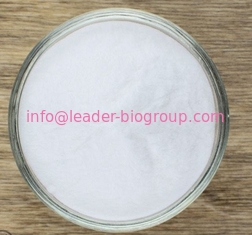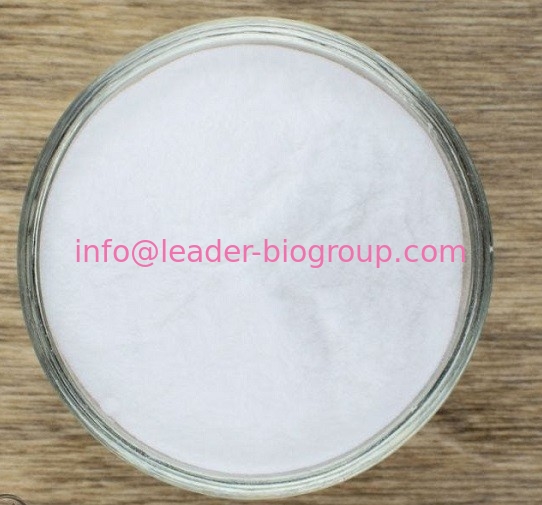| Product Name: |
Moxifloxacin |
| Synonyms: |
MOXIFLOXACIN;(1'S,6'S)-1-Cyclopropyl-7-(2,8-diazabicyclo[4.3.0]non-8-yl)-6-fluoro-8--4-oxo-1,4-dihyd;Moxifloxacin EP Impurity;Moxifloxacin Hydrochloride 2;MOXIFLOXACIN HYDROCHELORIDE;CS-83;7-[(4aS,7aS)-octahydro-1H-pyrrolo[3,4-b]pyridin-6-yl]-1-cyclopropyl-6-fluoro-8--4-oxo-1,4-dihydroquinoline-3-carboxylic acid;MAXIOFFOXACIN |
| CAS: |
151096-09-2 |
| MF: |
C21H24FN3O4 |
| MW: |
401.43 |
| EINECS: |
604-773-0 |
| Product Categories: |
intermediates;API |
| Mol File: |
151096-09-2.mol |
 |
| |
| Moxifloxacin Chemical Properties |
| Hazard Codes |
Xn |
| Risk Statements |
22-40 |
| Safety Statements |
36/37 |
| |
| Moxifloxacin Usage And Synthesis |
| Description |
Moxifloxacin is a fourth-generation synthetic fluoroquinolone antibacterial agent developed by Bayer AG (initially called BAY 12-8039), used to treat a number of infections, including: respiratory tract infections, cellulitis, anthrax, intraabdominal infections, endocarditis, meningitis, and tuberculosis. It is marketed worldwide (as the hydrochloride) under the brand names Avelox, Avalox, and Avelon for oral treatment. In most countries, the drug is also available in parenteral form for intravenous infusion.
In the United States, moxifloxacin is licensed for the treatment of acute bacterial sinusitis, acute bacterial exacerbation of chronic bronchitis, community acquired pneumonia, complicated and uncomplicated skin and skin structure infections, and complicated intra-abdominal infections.[5] In the European Union, it is licensed for acute bacterial exacerbations of chronic bronchitis, non-severe community-acquired pneumonia, and acute bacterial sinusitis. |
| Brand Name(s) in US |
Avelox |
| Quinolones |
Moxifloxacin and levofloxacin, gatifloxacin, gemifloxacin are quinolone antibacterial drugs newly developed in recent years. The position of C-7 ring structure of the nitrogen enhances antibacterial effect of gram positive bacteria, and strengthens the role of anaerobic bacteria. Such new varieties significantly increased excellent antibacterial activity against Streptococcus pneumoniae and other respiratory tract infections common pathogens antibacterial activity. Penicillin-resistant Streptococcus pneumoniae, Haemophilus influenzae, Moraxella catarrhal and Mycoplasma pneumoniae, Chlamydia pneumoniae Atypical pathogens, also known as "quinolones breathing". Moxifloxacin has bactericidal effect by interfering Ⅱ, Ⅳ topoisomerase. It also has strong antibacterial effect on gram-positive bacteria, Gram-negative bacteria, anaerobic bacteria, Mycoplasma pneumoniae, Chlamydia pneumoniae and Legionella bacteria. It has no cross-resistance situation between penicillins, cephalosporins, glycopeptides, macrolides, tetracyclines and other antibiotics. Bactericidal activity of moxifloxacin is similar with isoniazid, and is better than levofloxacin to rapid growth of Mycobacterium tuberculosis, as well as it is slightly lower than levofloxacin to quiescent Mycobacterium tuberculosis. It is for the treatment of acute bronchitis, chronic obstructive pulmonary disease exacerbations, community acquired pneumonia and bronchiectasis. General oral 400mg/times, 1 times/d; the course is 5 to 7 days. Adverse reactions are nausea, upset stomach and abdominal pain. The quinolones allergies, pregnant women, breastfeeding women and children should not use it. |
| Mechanism of action |
Moxifloxacin mechanism is mainly inhibition of bacterial DNA synthesis, since rapid bactericidal effect, which can act on bacterial DNA gyrase and topoisomerase Ⅳ, resulting in breakage enzyme-DNA complex. DNA gyrase, also known as topoisomerase Ⅱ, composed of the gyrA, gyrB subunit. DNA gyrase and topoisomerase Ⅰ common regulate DNA replication. Throughout the replication process, DNA gyrase mainly have the effect of the maintenance of DNA coiled modest role. Topoisomerase Ⅳ is composed of the parC and parE subunits. Its structure and DNA gyrase have similarities, which parC and gyrA, parE and gyrB have some homology. Topoisomerase Ⅳ can copy the complete distribution of progeny DNA to progeny cells, togr with DNA gyrase to complete bacterial DNA replication. Moxifloxacin enzyme-DNA complexes can be stable in the DNA chain cut off state, terminating the DNA replication, resulting in a cytotoxic effect. Moxifloxacin on site is the main function of most gram-negative bacteria DNA gyrase, and effect on gram-positive bacteria loci with topoisomerase Ⅳ primarily. |
| Preparation |
1-cyclopropyl-6, 7-difluoro-1, 4-dihydro-8--4-oxo-3-quinolinecarboxylic acid was dissolved in acetonitrile and dimethylformamide, and then added 1,4-diazabicyclo [2.2.2] octane and the (+)-[S, S]-2,8-diazabicyclo [4.3.0] nonane, refluxed for 1h. Cooling, precipitate was obtained by filtering, and washed with water. Stirring togr with water for a moment, filtered and dried. The residue was purified by silica gel chromatography, dichloromethane/methanol/17% aqueous ammonia = 30: 8: 1 start, and moxifloxacin was obtained, melting point 203~208 ℃. |
| Adverse effects |
- Moxifloxacin is associated with an increased risk of tendon problems. These include pain, swelling, inflammation, and possible breakage of tendons. Moxifloxacin may worsen muscle weakness and breathing problems in patients with myasthenia gravis. Do not use moxifloxacin if you have a history of myasthenia gravis.
- Rare but serious adverse effects that may occur as a result of moxifloxacin therapy include irreversible peripheral neuropathy, spontaneous tendon rupture and tendonitis, hepatitis, psychiatric effects (hallucinations, depression), torsades de pointes, Stevens-Johnson syndrome and Clostridium difficile-associated disease, and photosensitivity/phototoxicity reactions.
|
| References |
https://en.wikipedia.org/wiki/Moxifloxacin
https://www.drugs.com/cdi/moxifloxacin.html |
| Originator |
Avelox,Bayer |
| Definition |
ChEBI: A quinolone that consits of 4-oxo-1,4-dihydroquinoline-3-carboxylic acid bearing a cyclopropyl substituent at position 1, a fluoro substitiuent at position 6, a (4aS,7aS)-octahydro-6H-pyrrolo[3,4-b /ital>]pyridin-6-yl group at position 7 and a substituent at position 8. A member of the fluoroquinolone class of antibacterial agents. |
| Therapeutic Function |
Antibacterial |
| Antimicrobial activity |
It displays good activity in vitro against Enterobacteriaceae and fastidious Gram-negative bacilli such as H. influenzae and Mor. catarrhalis, as well as against Grampositive cocci including Str. pneumoniae, but is poorly active against Enterococcus spp. Activity against non-fermentative Gramnegative bacilli is species dependent: Acinetobacter spp. (MIC 0.006–2.0 mg/L) and Sten. maltophilia (MIC 0.5–2.0 mg/L) are partially susceptible in vitro, but it has poor activity against Ps. aeruginosa and other non-fermenting Gram-negative rods. It displays good in-vitro activity against Ch. pneumoniae, C. trachomatis, mycoplasmas (including M. pneumoniae), L. pneumophila and B. fragilis. Although highly active against M. tuberculosis, it is less active against the M. avium complex, M. intracellulare, M. chelonei and M. fortuitum. |
| Pharmaceutical Applications |
fluoroquinolone substituted with an 8- group and a 7-diazabicyclononyl moiety, formulated as the hydrochloride for oral or intravenous use. |
| Pharmacokinetics |
absorption and distribution
By the oral route, drug uptake is rapid, with moderate variability. As with all quinolones iron and antacids significantly reduce the bioavailability. No significant drug interactions with theophylline, itraconazole, probenecid or oral contraceptives have been found. In escalating dose studies (50–80 mg doses), Cmax and AUC values increased proportionally to the dose.
It is widely distributed throughout the body and into many tissues in concentrations exceeding those in plasma. Around 50–80% of plasma concentrations penetrate into CSF if the meninges are inflamed. The apparent plasma half-life is 15.6 h.
Metabolism and excretion
Biliary elimination and metabolism are the main elimination pathways. About 19.3% of the administered dose is eliminated in the urine, with a bioavailability of 86.2%. Urinary excretion is via glomerular filtration and tubular reabsorption. Two main metabolites are recovered: M1 (a sulfocompound) and M2 (a glucuronide). M1 is mainly eliminated in feces (34.4%) and only 2.5% in urine: M2 is eliminated in urine (13.8%). |
| Clinical Use |
Acute bacterial exacerbations of chronic bronchitis and community
acquired pneumonia
Acute bacterial sinusitis
Treatment of complicated skin and soft-tissue infections caused by methicillin-susceptible Staph. aureus and Gram-negative rods (i.v. formulation)
Treatment of complicated intra-abdominal infections (i.v. formulation) |
| Side effects |
Adverse events are similar to those for other fluoroquinolones. Phototoxicity rates are not significantly above placebo levels. Gastrointestinal side effects are the most common, particularly nausea, diarrhea, abdominal pain and vomiting. Dizziness and headache may occur as well as allergic reactions. Attention has been drawn to a potential to cause lifethreatening hepatotoxicity. Moxifloxacin has the potential to prolong the QTc interval in some patients but the clinical significance of this phenomenon is unclear. |
| |
| Moxifloxacin Preparation Products And Raw materials |
|

